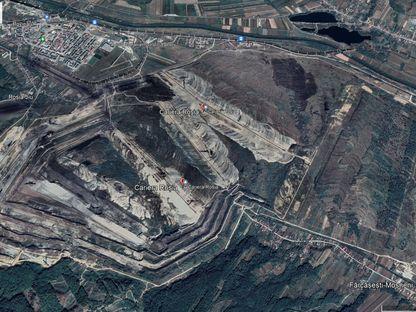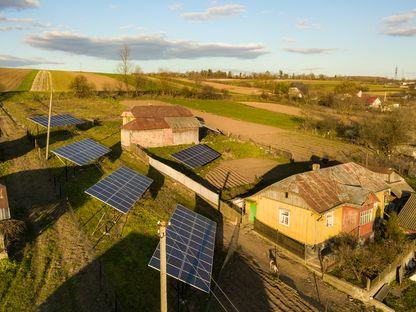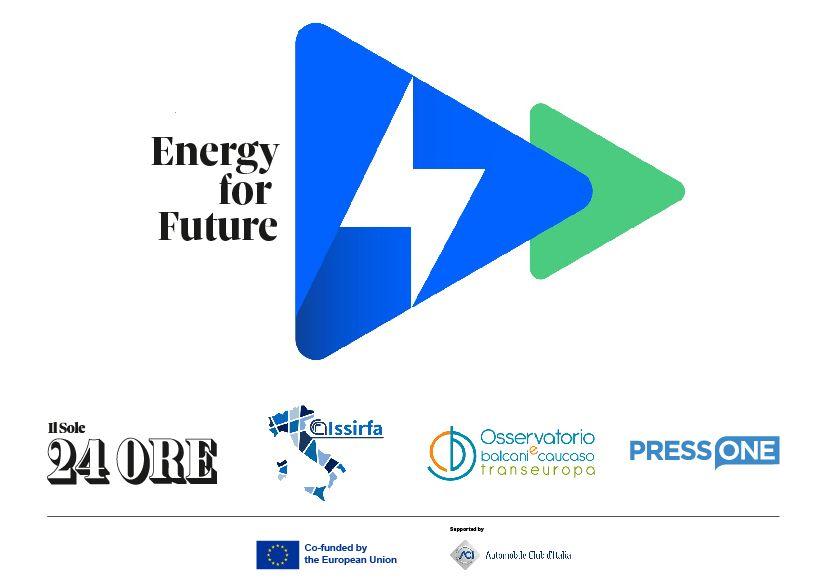Construction site of the Bucharest-South Ring Road (A0 SUD), lot 2, in Bucharest. Photo: Inquam Photos / George Călin
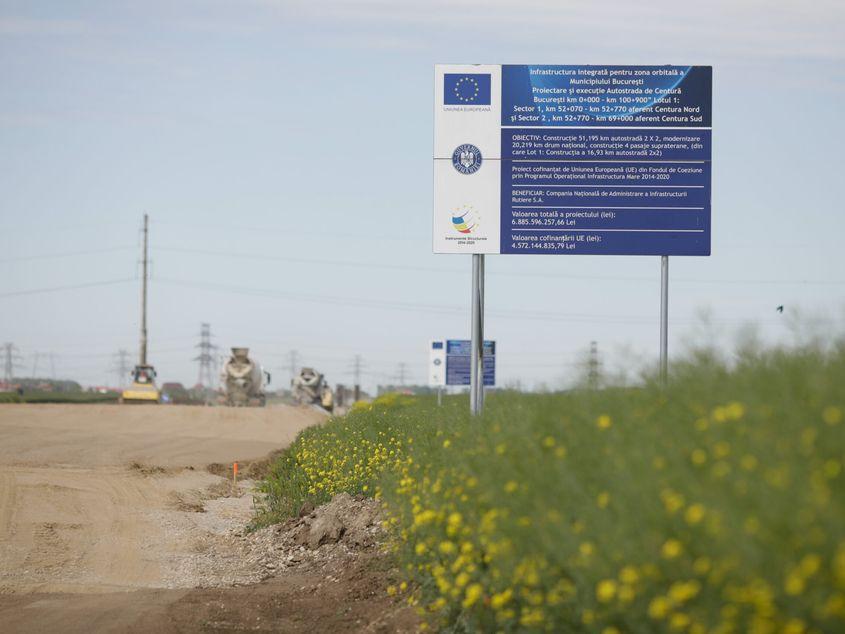
Construction site of the Bucharest-South Ring Road (A0 SUD), lot 2, in Bucharest. Photo: Inquam Photos / George Călin
11/06/2024
17 Years of European Funds: ”Cohesion Policy Has Failed in Romania”
What has changed in the more than 17 years since Romania's accession to the EU, which came with more than €95 billion of EU funds accessed, and why do experts consider cohesion policy a failure in Romania?
Since 2007, Romania has been a beneficiary of EU cohesion policy. This means that it receives European funds for investments aimed at narrowing the social, economic and territorial gaps between Romania and the EU average.
We want to be able to report in depth about the everyday life of Romanians as it is. If it's important to you too, help us get it right! Any amount counts.
- According to the economy minister, between 2007 and 2022, Romania's GDP growth was 3.04%, the second highest in the region after Poland (3.83%) and above the European average of 1.2%.
- GDP/capita at purchasing power parity grew from 40% in 2006 to 76% in 2022, bringing Romania closer to Poland and Hungary.
- According to NSI data for March 2024, the average net wage reached 5,185 lei, while in the pre-accession period it barely reached 1,000 lei.
- However, the average standard of living is different within the country. Regions such as Bucharest-Ilfov are much more economically developed than the rest of the country. According to INS data, in 2021 GDP/capita in the region was around €30,000. At the other end of the scale, GDP/capita in the North-East Region barely reached €10,000.
- PressOne spoke to Ana-Maria Icătoiu, an expert on accessing European funds and vice-president of the UGIR Women Entrepreneurs' Organisation (OFA), about what European funds have meant for Romania and how making cohesion policy conditional on performance would not be in our favour.
PressOne: More than 17 years after accessing European funds with the aim of reducing some social, economic and territorial gaps between Romania and the EU average, what have we achieved?
Ana-Maria Icătoiu: As an average, if we talk about the minimum wage or the average wage per economy or, generically, the average living standard, the gap between Romania and the average of the European Union countries is much smaller than it was in 2006, before accession.
According to the report published by the Ministry of Finance at the end of March 2024, Romania has accessed €95.469 billion between accession and March 2024. This while the contribution to the EU budget was €30.327 billion, resulting in a positive balance of €65.140 billion.
Basically, for every €1 Romania contributed, it got €3 back.
The problem with the way cohesion policy has worked, and this not only in Romania but also in other Member States, is that although the average standard of living has risen, there are very areas where the gap between different counties in the same development region is greater than it was before accession.
Can you give me some examples?
Mulți ne citesc, puțini ne susțin. Fără ajutorul tău, nu putem continua să scriem astfel de articole. Cu doar 5 euro pe lună ne poți ajuta mai mult decât crezi și poți face diferența chiar acum!
If we look at the North-East Region, we have a huge gap between Iasi and Vaslui counties or even Neamt and Botosani. Iasi benefits from an important university center and significant investments in the IT sector, which have attracted a young and well-qualified workforce. By contrast, Botoșani and Vaslui remain predominantly rural, with an economy based on agriculture and a low level of industrialisation and services.
If we look at the Western Region, we have two champion counties in terms of living standards, Timis and Arad. At the same time we have, in the same region, Caras-Severin and Hunedoara, with a standard of living well below the level of development for Arad and Timis.
In the North-West Region we have Cluj county, which is above the national average for living standards. On the other hand, although we have the municipality of Oradea, which is doing very well, the rest of Bihor county and the rest of the region, with the counties of Satu-Mare, Maramureș, Sălaj, even Bistrița-Năsăud are well below this average.
In the center we have Alba, Sibiu, Brasov which, from an economic point of view, have also benefited from infrastructure works linking them, for example, to Western Europe. We also have an entrepreneurial spirit that has always been a little more developed here than in counties such as Harghita, Covasna or Mures.
Are these internal disparities specific to Romania?
Coal Mining Expansion Leads to Deforestation: Over 470 Hectares of Forest Cut Down in Gorj, Romania
Over the past six years, more than 470 hectares of national forest land have been allocated by the government, without compensation, to the Oltenia Energy Complex (CEO) for the expansion or opening of new coal mines.
The not-so-green Romania. The state delays settlements for photovoltaic panels by 2 years
PressOne reviews the main dysfunctions in the production, consumption and distribution of energy from renewable sources, as revealed by discussions with consumers and data provided by official sources at the request of our editorial office.
No, this is not a situation specific to Romania. Such situations happen everywhere in Europe, including Western European countries, not just in the former communist bloc countries.
The annual reports on how cohesion policy works show that such major gaps within the same development region happen everywhere. That is why, sometime in late 2024, early 2025, all Member States will start discussions for cohesion policy post 2027.
In many eastern member states, such as Slovakia, Bulgaria and Romania, increases in disparities have been driven by very high growth rates in the most developed regions, usually those around the capital," says the European Commission's ninth report on economic, social and territorial cohesion published in March 2024.
Un newsletter pentru cititori curioși și inteligenți.
Sunt curios
What will cohesion policy look like after the current multiannual financial framework 2021-2027 ends?
Discussions will take place to decide whether at European level we should continue with regional programmes designed as before, or whether to go for a different approach.
One approach talks about funding for the future cohesion policy, after 2027, going strictly to disadvantaged areas, as they were known in the past. Now they are called 'pockets of underdevelopment' in a forced translation. They exist not only in the countries that joined the European Union in the 2000s, but also in Western countries, including the Nordic countries.
There are discussions at European Commission level in which countries that have been net contributors to the budget for years complain that they too have such underdeveloped areas on their territories that deserve targeted one-off funding. Such an approach would not necessarily benefit Romania as a whole.
Why?
Of course, counties that are much less developed need more help than others, and there are some attempts even in the current cohesion policy. One example is the Western Regional Programme, where there are certain calls for projects dedicated only to the two least developed counties, Caras-Severin and Hunedoara, or there are other calls for projects where the co-financing percentages are much lower in Hunedoara and Caras-Severin than in Timis or Arad.
However, Romania's economy as a whole is still far from being at the level of competitiveness that would allow, after 2027, funding only for areas or localities that are much less developed than average.
Romania still needs tailor-made financing instruments developed following very careful analysis together with the European Commission and national decision-makers, so that the level of competitiveness of Romanian SMEs increases.
In terms of competitiveness, innovation, level of innovation, products, services, we are still very weak compared to the European average. In terms of the internationalisation of Romanian SMEs, we are also in a very weak position, with very few Romanian companies having subsidiaries outside Romania. There are very few national SMEs exporting outside Romania.
In the future, there is the possibility of having an approach like this: companies that want to develop outside their country of origin, want to export what they produce, should be able to benefit from a uniform regulatory, authorisation, licensing and taxation regime, regardless of the European country to which they want to export. Real access to the European single market.
In addition to the private sector, when it comes to attracting European funds there are also state institutions. How has the public sector done in attracting European funds to reduce the existing gaps in Romania?
You don't have to drive more than 10 minutes out of Bucharest to realise that cohesion policy has indeed failed. Unfortunately, the decentralisation of the regional programme came too late. One very good thing that is happening at the moment, on the 2021-2027 financial framework, is precisely the decentralisation of the regional programme. We can already see the effects. The regional development agencies are moving very well.
If we look at the first version of the regional programmes, which was ready somewhere around the end of 2020, and the final version, which is now in place, the differences are very big, in a good way.
It has never happened for a call for SME projects, until last year and this year, to have the evaluation and contracting period as short as it is now.
What does this short period mean?
A good example is the Just Transition Programme 2021-2027. There are applications that were submitted sometime in December or January and by March-April they were already contracted.
Any non-reimbursable funding, whether European or national money, appeals to the private sector or to local authorities, should be managed entirely by the regional development agencies.
Why did it take two financial cycles to achieve this decentralisation?
This is a question you need to ask those who have been in government. It's a political discussion, just as it was years ago about development regions having headquarters. Those discussions have been abandoned.
It is more than obvious that Romania needs administrative reform. It is obvious that you cannot manage Romania's 3,230 or so administrative-territorial units in a coherent way. It is unacceptable to have communes with less than 1,000 inhabitants running an administrative apparatus. These entities cannot be self-supporting and this has been evident over the last decade.
Do you think there is a need for administrative reform in the sense of regionalisation?
In our view, yes, without question. The very good way in which regional programmes such as the Just Transition Programme are currently being implemented shows that this is the key, this is what should have been done a long time ago.
n the past we had calls for projects on the regional programme unique at national level. Can you imagine what it meant for an SME from Vaslui, Tulcea or Hunedoara county to compete on the same call for projects, with the same characteristics, with the same evaluation grid with an SME from Prahova, Argeș or Ilfov?
Is this a reason for the widening of the gaps even within regions?
Including because of this, yes. If we look at the South-Muntenia region, on the 2014-2020 Regional Programme, most of the applications submitted and funded in this region come from Prahova and Argeș counties, which in any case, since the past, including their industrial history, have had a much greater entrepreneurial appetite. Of course, this disadvantages counties such as Giurgiu, Teleorman, Dâmbovița, Ialomița and Călărași.
According to reports by the Ministry of Investment and European Projects, Teleorman county is in second last place when it comes to European funds accessed in the 2014-2020 period.
Does this different evaluation grid help?
It is a way of trying to reduce these disparities within the same region. Especially as this is the last chance Romania has until 2030 for grants of a classic nature.
Cohesion policy can continue exactly as it is now or it can go exclusively with funding only for underdeveloped areas. There are other approaches that say that performance should be rewarded, that it is pointless to give money where it was available but not attracted.
We also have to take into account the fact that three multiannual financial frameworks will have already passed over Romania. From behind will come other countries that will become members by 2030. It is clear that those classic non-reimbursable grants will go to these countries as a priority.
It is clear that Romanian entrepreneurs need to prepare for financial instruments with a stronger credit component and a less strong grant component. This is the normal evolution.
Let's imagine that after 2027 at European level we will go for the scenario where funds are correlated with performance. In this scenario, what are the chances that Romania will receive as much funding as it has received so far?
Very weak. I always make a correlation when talking about this approach with what is happening with the old Horizon 2020 programme and the current Horizon Europe. The projects on the Horizon programme are some with a very strong research, development, innovation component. And applications are usually submitted in consortia. We are talking about a mandatory consortium of at least three entities from at least three EU member states or partners. As far as I know, very rarely or not at all consortia led by a Romanian SME leader have won funding. Unfortunately, entrepreneurs in our country still see innovation and research as an expense, not as an investment.
If they go exclusively on performance funding, Romania will lose out.
What are the areas where Romania still has some way to go to close the gap with the EU average?
Mainly access to health and education services in rural and small urban areas. There are deserts of services everywhere in the country, regardless of the county, where there is no family doctor, no pharmacy, no emergency health care, no dental care.
There are educational deserts. There are countless cases of children having to travel miles to get to school. This is also one of the main reasons why Romanians in the diaspora do not return home. A Romanian abroad, who might want to return to the country, would never go back solely for a good salary if he knows that he cannot get quality health care here when he needs it or that his children do not have a good school to go to near his home.
What are the infrastructure gaps?
There are major disparities here too. If you look at the map of motorways and expressways, there are areas that are completely unserved at the moment. For example, the North-East Region. Any investor who had the choice between coming to Romania in the region of Moldova or going to Hungary, Slovakia, Poland, will not choose the north-east of Romania at the moment, because there is nowhere to send his goods either to Western Europe or to Constanta.
It is obvious that the lack of infrastructure or the concentration of infrastructure development in certain regions has contributed to the widening of these gaps between regions, but also within the same region.
What is the situation regarding rail infrastructure?
The same. If you look at the financial situation of CFR Călători and CFR Marfa, that says a lot. And we've been watching for years how debt after debt is being erased. There are European funds, there always have been, they just need to be spent. The money has to be taken, because it is the last chance Romania has to access European money in the classic system.The lack of infrastructure in certain regions has contributed to accentuating these gaps between regions, but also within the same region.
What do you think are the reasons why, despite the fact that life in Romania is no longer as it was in 2006, almost 28% of Romanians believe that joining the European Union has brought disadvantages?
It is natural that this is the result. On the one hand, because there is a lot of manipulation and a lot of fake news circulating especially on social networks.
The relevant stakeholders have not done enough, or have only done so in the years with the European Parliament elections, to explain to the Romanian citizens what membership of the European Union means, to explain very simply what would happen if tomorrow Romania were no longer a member of the European Union. Just look at the United Kingdom of Great Britain and Northern Ireland, where the economic losses are massive after leaving the European Union. The advantages are obvious for the average Romanian citizen.
On the other hand, if we are talking about pockets of underdevelopment, it is normal for the local citizen, who has not felt anything, because in his commune no program with European funds has been implemented, no nursery, no kindergarten, no school has been built, there are no dispensaries, there is no doctor, to have the perception that joining the European Union has not brought anything good, on the contrary.
This article is published as part of the Energy4Future project, co-funded by the European Union. The European Union is not responsible for the information and opinions expressed during this project and article. Responsibility for the content lies entirely with PressOne.
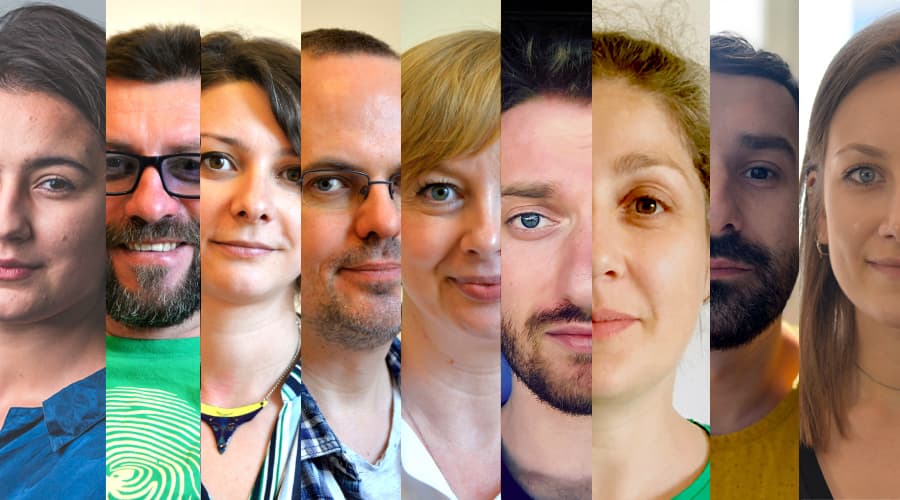
Avem nevoie de ajutorul tău!
Mulți ne citesc, puțini ne susțin. Asta e realitatea. Dar jurnalismul independent și de serviciu public nu se face cu aer, nici cu încurajări, și mai ales nici cu bani de la partide, politicieni sau industriile care creează dependență. Se face, în primul rând, cu bani de la cititori, adică de cei care sunt informați corect, cu mari eforturi, de puținii jurnaliști corecți care au mai rămas în România.
De aceea, este vital pentru noi să fim susținuți de cititorii noștri.
Dacă ne susții cu o sumă mică pe lună sau prin redirecționarea a 3.5% din impozitul tău pe venit, noi vom putea să-ți oferim în continuare jurnalism independent, onest, care merge în profunzime, să ne continuăm lupta contra corupției, plagiatelor, dezinformării, poluării, să facem reportaje imersive despre România reală și să scriem despre oamenii care o transformă în bine. Să dăm zgomotul la o parte și să-ți arătăm ce merită cu adevărat știut din ce se întâmplă în jur.
Ne poți ajuta chiar acum. Orice sumă contează, dar faptul că devii și rămâi abonat PressOne face toată diferența. Poți folosi direct caseta de mai jos sau accesa pagina Susține pentru alte modalități în care ne poți sprijini.
Vrei să ne ajuți? Orice sumă contează.
Share this


